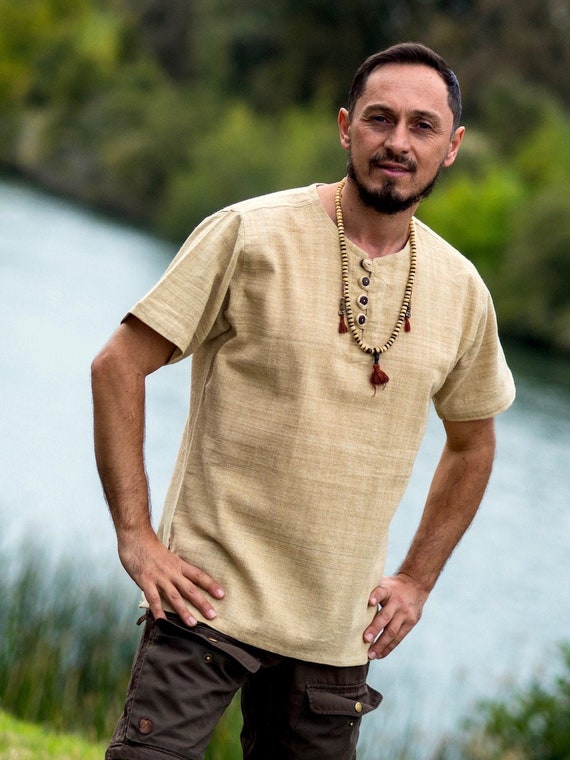Good Suggestions For Selecting Hemp Clothes
Wiki Article
What Are The Advantages Of Hemp Fibres That Are Low Impact Clothing For The Environment?
Clothing made of low impact hemp fiber has numerous environmental benefits compared to other textiles. This includes clothing that is made with synthetic fibers or conventional cotton. Hemp clothing offers several environmental advantages. It grows rapidly and requires minimal water, herbicides, or pesticides. Hemp can thrive in various climates and can adapt to various types of soils, thus reducing the need for chemicals used in agriculture.
Hemp requires less water than cotton, a crop well-known for its high consumption. This makes hemp an eco-friendly option for clothing.
Hemp is grown in most cases without the use of synthetic pesticides and herbicides. It has a less impact on the environment than chemical agriculture.
Soil Health- Hemp cultivation can enhance soil health because of the deep roots system which can help prevent compaction and erosion of soil. This helps make the soil more fertile for future plantings.
Hemp can be biodegraded. It breaks down naturally over time and helps reduce the waste of textiles. Contrary to synthetic fibers, like polyester can take hundreds of years to decompose.
Lower Carbon Footprint: The production of hemp fibers generally has a less carbon footprint than synthetic materials. In addition, as it develops hemp absorbs carbon dioxide from the atmosphere, acting as carbon sink.
Durability Hemp clothing is renowned for its long-lasting durability and durability. Hemp clothing of high quality can last many years. This eliminates the need to replace it regularly and also waste.
Hemp plants naturally resist numerous bugs. They don't need pesticides.
Hemp is a versatile textile that can be used for clothing, bags, or accessories.
Regenerative Agriculture: Some sustainable farming practices include hemp into regenerative agricultural systems that aim to restore and improve the ecosystem while also producing crops. This method could have positive environmental effects.
The dyeing process, transport and the consumer's behavior all contribute to the sustainability of the entire process. Similar to any other business, there will be variations in production methods and guidelines. This is why it's crucial to find organic hemp clothing or certified hemp clothing. This will provide the highest environmental benefits. Have a look at the top rated hemp clothing url for website recommendations including patagonia hemp overalls, hemp button shirt, hemp clothing wholesale, hemp polo shirts, hemp trousers, hemp clothing womens, jungmaven t shirt, hemp work pants, patagonia work pants hemp, hemp sweatshirt and more.

How Do Hemp Fibers Help In Carbon Sequestration, Sustainability And Crop Rotation?
Carbon Sequestration:
Hemp develops rapidly, and can be matured in 70-120 days depending on its variety and growing conditions. In order to speed up their growth, hemp plants absorb CO2 from the atmosphere as part of photosynthesis. This carbon uptake could significantly reduce the amount of CO2 by storing it.
Hemp has a high biomass production. The thick foliage of the plant and its tall stalks yield an impressive amount organic matter. This biomass can be used to build up organic carbon in soils as well as for other applications.
Sustainability:
Hemp crops require less chemical pesticides and herbicides in comparison to other crops like cotton. The natural resistance to pests and disease decreases the need for chemical. Organic hemp farming in particular promotes sustainable farming by avoiding synthetic chemical substances.
Water Efficiency- Hemp is a relatively water-efficient crop that can flourish with little irrigation, particularly when compared to traditional cotton that is water-intensive. This makes it more sustainable in areas with limited water resources.
Hemp’s deep root system improves soil health. The deep roots of the plant can reduce runoff by stabilizing soils and improving the structure of soil. Hemp cultivation also improves the activity of soil microbial organisms which helps to improve nutrient cycling and soil fertility overall.
Hemp can be integrated into crop rotation systems. Crop rotating involves the alternating of different crops within a single field. This can help to break pest and illness cycles and reduce soil depletion, and improve soil structures. The role of hemp in crop rotation helps to ensure sustainability.
The rotation of the crop-
Diversification- Hemp can be incorporated into crop rotation systems alongside other crops such as legumes, grains, or vegetables. This can help farmers to maintain the quality of their soil and reduce the chance of pests, diseases, and other problems related to crop, and promote a balanced process of nutrition.
Soil Improvement- Hemp's deep roots are able to penetrate and aerate soil improving compaction as well as the infiltration of water. The soil structure improves after a hemp harvest that benefits other crops.
In the end, hemp fibers help improve carbon sequestration methods, sustainability, crop rotation and efficiency of water through their rapid growth biomass production, as well as their low chemical needs. These characteristics make hemp production an environmentally sustainable and regenerative agricultural practice. The resulting fibers are suitable for use in textiles or other eco-friendly applications. Check out the most popular description for hemp clothes for site tips including hemp bathing suit, hemp apparel wholesale, hemp shorts, hemp clothing near me, jeans hemp, hemp clothing womens, hemp fleece fabric, women's all seasons hemp canvas bomber hoody jacket, 100 hemp shirt, hoodlamb coat and more.

What's the difference between hemp and bamboo fibers?
Bamboo and hemp are two distinct plant-based fibers used in textile manufacturing each with their own unique characteristic and characteristics. These are the major differences in hemp and bamboo fibers. Plant Source-
Hemp- Hemp fibers are taken from the stalks of the hemp plant, specifically from the bast fibers that are in the outer layer. Hemp has been utilized for a variety of reasons over the years. Hemp is a fast-growing, versatile plant.
Bamboo- Bamboo fibers come by removing the woody part from the bamboo plant. Bamboo is an extremely rapid-growing grass, renowned for its strength and speed of renewal.
2. Fiber Characteristics
Hemp- Hemp fibers are known for their strength and durability. They are among the strongest of all the natural fibers. With each wash they become softer and more flexible, making them ideal for fabrics that last for a long period of.
Bamboo- Bamboo fibers are exceptionally soft and smooth. They also have a silky feel. They are not as strong like hemp fibers and may be more fragile, however they are prized for their comfort against the skin.
3. Texture-
Hemp- Hemp fabrics have an abrasive, textured feeling in the natural state. It's comfortable, but is different from bamboo.
Bamboo bamboo fabric is smooth, silky, and luxuriously soft. It's described as having a silky, silky, and cottony texture. It's very cozy.
4. Breathability (and moisture-wicking)-
Hemp- Hemp fabrics are naturally moisture-wicking. This allows for improved air circulation and also absorbs moisture. They can keep you dry and cool in hot temperatures.
Bamboo bamboo fibers are extremely water-wicking and breathable. Micro-gaps in the fabric enhance the fabric's ability to regulate temperature and moisture, allowing you to stay at ease in all conditions.
5. Environmental Impact-
Hemp Hemp is regarded as an eco-friendly fiber because of its rapid expansion, low water consumption and resistance to insects, which reduces the need to apply pesticides. Hemp can also absorb carbon from the atmosphere throughout its expansion.
Bamboo's sustainability is widely known. It grows quickly, needs minimal water, and can be grown without synthetic herbicides or pesticides. Certain varieties of bamboo are thought to be extremely sustainable, like Moso bamboo.
6. Processing-
Hemp- Hemp fibers require intensive processing to separate outer bast fibers from the inner woody core. Processing can include retting and decortication, in addition to mechanical separation.
Bamboo fibres generally obtained via an enzymatic process known as the rayon or viscose process. The bamboo pulp is broken down using chemicals. Some bamboo textiles, however, employ closed-loop techniques to help reduce the waste of chemicals.
7. Versatility-
Hemp- Hemp fibres can be used for a wide range of applications, including clothing, textiles and paper. They also make great building materials.
Bamboo fibers can be found in many products, including towels and bedding.
In summary In the end, both bamboo and hemp provide unique characteristics and sustainable benefits. The choice between these two depends on the characteristics you look for in a fabric and also your preference for the environment. View the top koraoutdoor.com outdoor clothing for site info including bamboo yoga pants, bamboo clothing leggings, bamboo yoga wear, bamboo tee shirts mens, mens boxer shorts bamboo, women's freefly apparel, bamboo twirl dress, bamboo bed clothes, bamboo pants, bamboo terry fabric and more.
